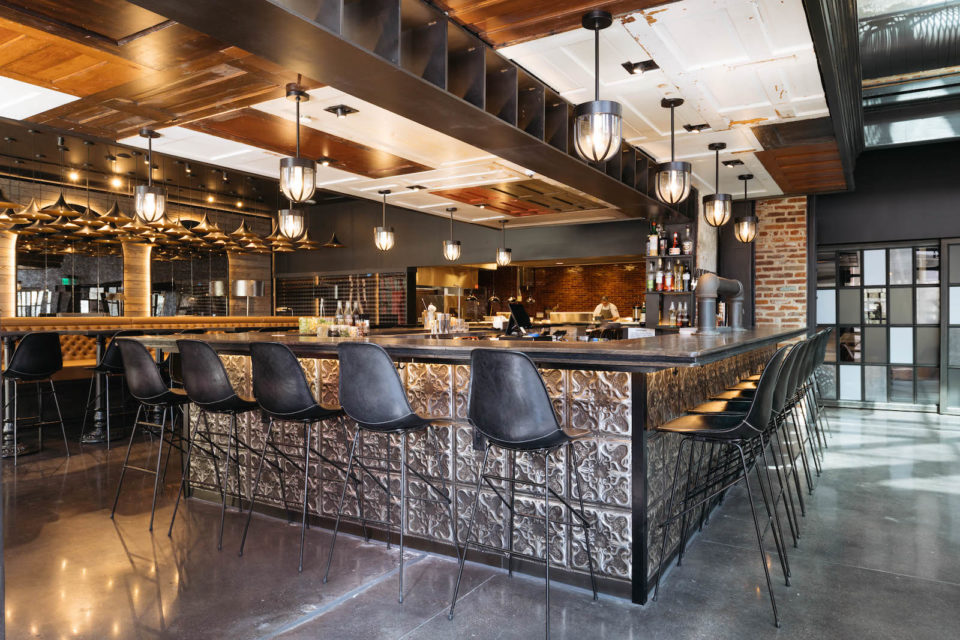The Local newsletter is your free, daily guide to life in Colorado. For locals, by locals. Sign up today!
The oldest building in Denver’s Union Station neighborhood was a lonely relic for a long time, but that only added to its intrigue. “Everyone who is an architect in Denver had seen this building sitting in what used to be a wasteland of parking lots and storage areas and fenced utility areas,” says Kevin Stephenson, principal and founding partner of Denver’s Boss Architecture. “There’s this very interesting, perfect little historic red brick building that’s been sitting on that corner forever, abandoned for many, many years.”
Known as Hose House No. 1, the 1881 landmark on the corner of 20th Street and Chestnut Place is the oldest fire station still standing in Denver. Over the years, an entirely new streetscape grew up to surround the increasingly derelict structure, yet still it remained untouched.
That's only $1 per issue!
That is, until Focus Property Group began developing the adjacent Hilton Garden Inn Denver Union Station, and recognized the historic building’s potential. The team behind the project asked Johnson Nathan Strohe (JNS), Boss Architecture, and Davidson Restaurant Group to collaborate on an effort to revive the ailing landmark. In May, the old building was reborn as Woodie Fisher Kitchen & Bar, a neighborhood gathering place named in honor of Redwood “Woodie” Fisher, an early Denver firefighter who died while stopping a runaway horse-drawn hose wagon in 1870.
“When we first saw [the building], I’d say it was populated more by pigeons than anything else, and it was really in terrifyingly poor shape,” Stephenson recalls. The walls were crumbling, there were charred reminders of a long-ago fire, and one of the building’s previous incarnations as a welding shop had left behind a disused mezzanine. “It was dark and foreboding on the interior, but it had so much potential from an architectural standpoint,” he says.

Although strict historic-preservation guidelines prevented any major changes to the building’s exterior, the design team completely reconfigured the interior, removing the mezzanine to create a large, open dining room. Because the original roof was falling apart, they had a chance to make one especially significant change—adding a massive, 26-foot square skylight. “It brought in a ton of light for that space and really emphasized the cool proportions—it’s almost a perfect cube,” says Brent Forget, principal at Boss Architecture. “It also allowed for views up to this new hotel tower that’s built around two sides of it. Even when you’re sitting down, you can look up through the skylight and see how the city has changed and grown in around this building.”

The new interior design nods to Denver’s past and present with a mix of texture-rich finishes. In the main dining room, the building’s original, two-story, raw brick walls display hand-scrawled words written long ago. At the adjacent bar—where sleek stools pull up to a wall wrapped with pressed-tin panels—a dropped “ceiling” composed of reclaimed doors creates a more intimate vibe.
The restaurant’s seating options are equally eclectic: tailored, tufted-leather booths and banquettes; mid-mod stools at long community tables; and industrial metal-and-wood stools at the chef’s table (the Hure dining table by Vintage Industrial), a hefty, heavy-gauge-steel piece inspired by old cast-iron table bases made from the late 1800s to the 1940s. Illuminating the rooms is a decidedly modern assortment of light fixtures, from the dramatic black chandeliers crafted from bicycle chains in the main dining area, to an eye-catching array of 50 siren-horn-shaped pendants in the lounge.

Several design details recall the building’s original function—massive red double doors at the entrance, charred-wood interior accents—as does the menu, which executive chef Franco Ruiz (formerly chef de cuisine at Fruition Restaurant) infused with a few smoky notes—think: charred broccolini flatbread with ricotta and sweet and sour peppers; fire-roasted carrots flavored with harissa spice and served with smashed pea yogurt; smoked pork short ribs; even chocolate s’mores with a burnt meringue.
“I feel fortunate to be part of the revival of this historic site and to create a menu that pays homage to everything Woodie Fisher stands for,” Ruiz says. “The dishes are inspired by the tenacity of the building in which they’re served.”
Forget shares Ruiz’s soft spot for the structure that continues to hold its own in a changing community: “That whole zone behind Union Station feels really shiny and new right now,” he says. “When I moved to Denver five or six years ago, it was barren and flat and there was nothing there—only this tiny building that had been sitting there the whole time, and it was surrounded by junk. And now to see that building still there and looking fantastic, I think helps keep the context and history of that neighborhood alive.”
If you go: Woodie Fisher Kitchen & Bar is open daily for dinner Sunday through Thursday from 5–10 p.m., and Friday and Saturday from 5–11 p.m. 1999 Chestnut Pl., Suite 100







